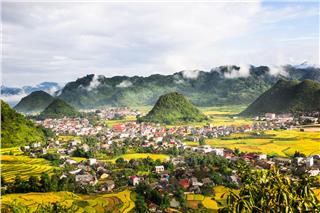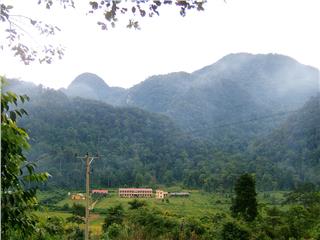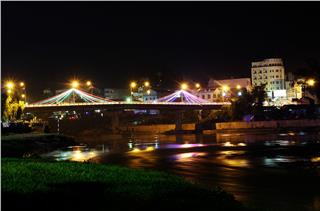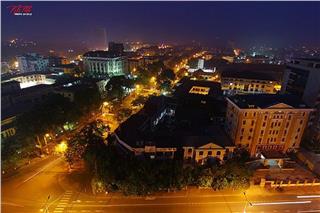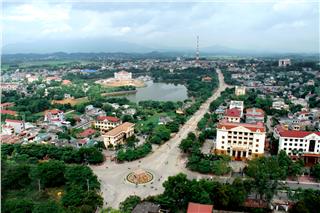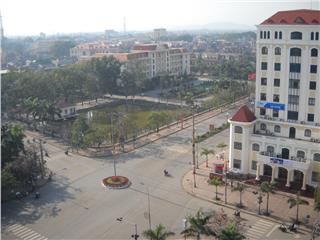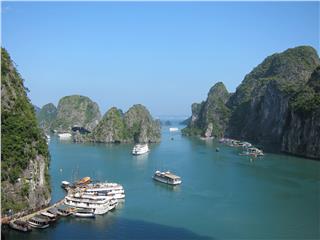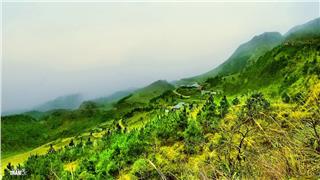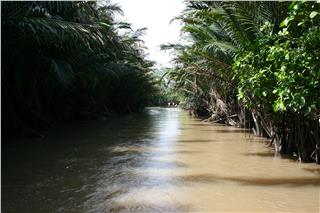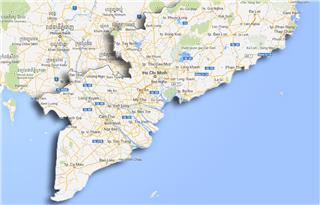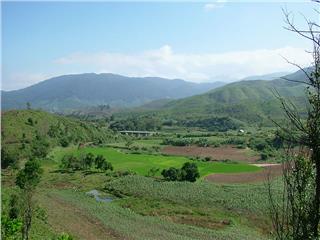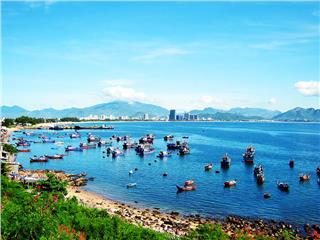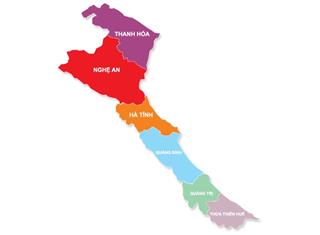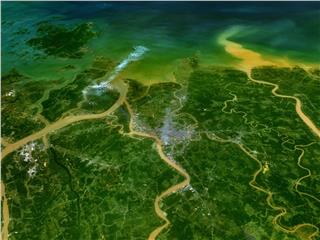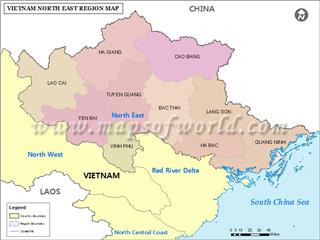Bac Kan is endowed the potential for the socio-economic development with resources of forest, soil, mineral and Ba Be National Park which has Ba Be Lake - one of 20 large freshwater lake in the world.
Bac Kan is a province in Northeast Vietnam, has border with Cao Bang in the north, Lang Son in the east, Thai Nguyen in the south and Tuyen Quang in the west. According to the population census in 2009, Bac Kan is the least population in the country. Sometimes, the name of the province is written as Bac Can; however, the name Bac Kan is considered the offical name.
Geography
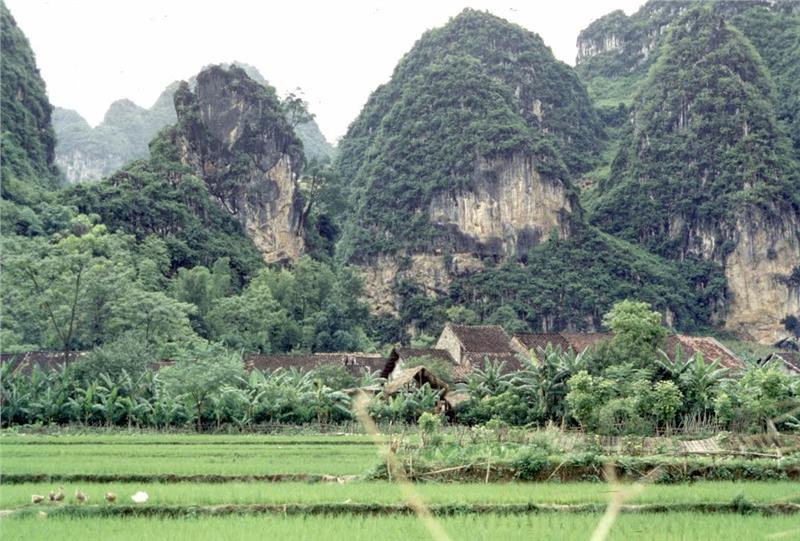
Bac Kan is a mountainous province located inland Northeast. The province borders Lang Son in the east, Tuyen Quang in the west, Thai Nguyen in the south and Cao Bang in the north. Bac Kan has an important position in term of economy and defense security.
It situates in National Route No.3 from Hanoi to Cao Bang - the important highway of the northeast and among the provinces with the large economic development potential. The National Route No. 3 divides the province into 2 equal parts towards the South – North. Bac Kan terrain consists of many high mountains, locates inland so the province meet with difficulties in the exchange of goods with large economic center and seaports as well. The transportation network in the province is mainly road. The geographical position and difficulties of the terrain have significant impacts on the socio-economic development of Bac Kan.
Bac Kan has the humid tropical climate divided according to the terrain and mountain's direction. With the tropical monsoon regime, Bac Kan has two distinct seasons: rainy season starts from May to October, accounting for 70 - 80% of the rainfall in year; dry season is from November to April of next year, the rainfall of this season accounts for 20 - 25% the total rainfall. The annual average temperature is 20 - 220C.
The river network in Bac Kan is relatively plentiful, but most of them is headwater tributaries with the common characteristics as short and unusual tidal regime. Bac Kan is the headwater of 5 large rivers in Northeast including Lo River, Gam River, Ky Cung River, Bang River and Cau River. In addition to river system, Bac Kan is famous for Ba Be Lake. This is one of the most beautiful and biggest lake in the country, formed from a limestone area fallen and eroded by underground water. The lake area is about 500 ha, is the confluence of three rivers Ta Han, Nam Cuong and Cho Leng. The lake has three interconnecting branches so it is called Ba Be. This is still hides great potential for tourism development.
History
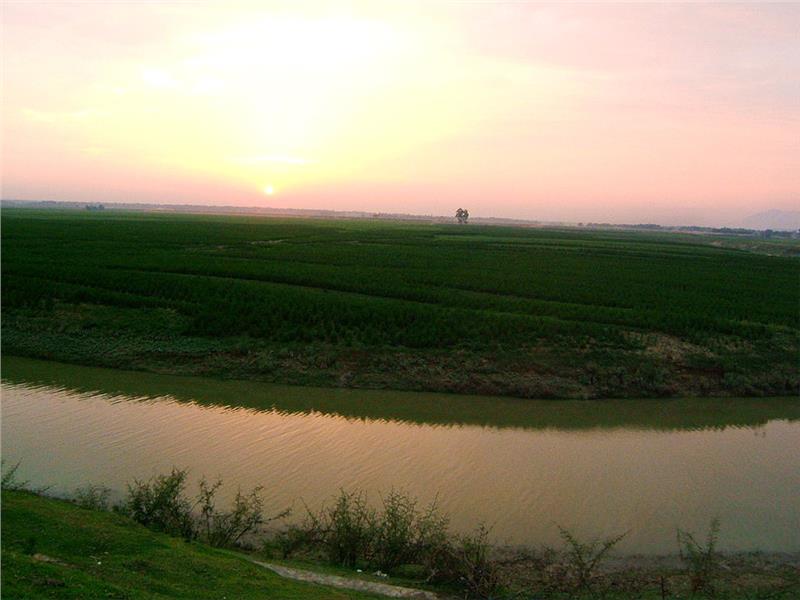
During the period of Hung King, Van Lang country was divided into 15 departments, and Bac Kan belonged to Vu Dinh department. Under the Chinese domination of Vietnam, Han dynasty, Bac Kan belonged to Long Bien district. Under the reign of Tang Dynasty, Bac Kan was in Tan Xuong district, Chau Phong.
Bach Dang victory in 938 ended a thousand years of Chinese domination, and Vietnamese feudal dynasties were established. During the period of Ly Dynasty, the country was divided into 24 administrative units. Bac Kan belonged to Cam Hoa, Vinh Thong and Ha Nong. Under the Tran Dynasty, the country consisted of 12 provinces, 4 towns and 14 districts. Bac Kan was located in Thai Nguyen district. When Ming Dynasty invaded Vietnam, they divided Vietnam into 15 districts, 31 administrative divisions, Thai Nguyen district was changed into Thai Nguyen province including 11 districts, Bac Kan located in 3 districts of Cam Hoa, Vinh Thong and Long Thach.
When the French colonialists invaded, occupied and set up the rule in Thai Nguyen Province, they repeatedly changed the administrative units. On April 11th, 1900, the Governor-General of French Indochina issued decree to establish Bac Kan province including districts Bach Thong, Cho Ra, Cam Hoa (later changed to Na Ri), Thong Hoa (later renamed Ngan Son).
On July 16th, 1990, the Council of Ministers (now Government) issued the Decision No. 262/HDBT "Dissolution of Bac Kan town in Bach Thong district to establish Bac Kan district, Bac Thai province". To meet the people's aspirations and the requirements of the revolution in the period of industrialization and modernization of the country, on November 6th, 1996, the 10th session of the National Assembly IX approved the administrative boundary division of some provinces. In which, Bac Thai province was separated into Thai Nguyen and Bac Kan. On January 1st, 1997, Bac Kan province was officially re-established.
Population
The population of Bac Kan is 294.660 people with 7 ethnic groups living together. Among them, Tay ethnic people cover the majority of population with 54%. The percentage of other ethnic groups are relatively 16.8% of Dao ethnic people, 14% of Kinh ethnic people, 9% of Nung people, 5.5% of Mong people, 0.4% of Hoa people and 0.3% of San Chay people.
Administration
Bac Kan has 8 administrative units, consisting of 1 town and 7 districts (Bac Kan town and districts of Cho Moi, Cho Don, Bach Thong, Ngan Son, Ba Be, Na Ry, Pac Nam), with 122 communes, wards and towns.
Economy
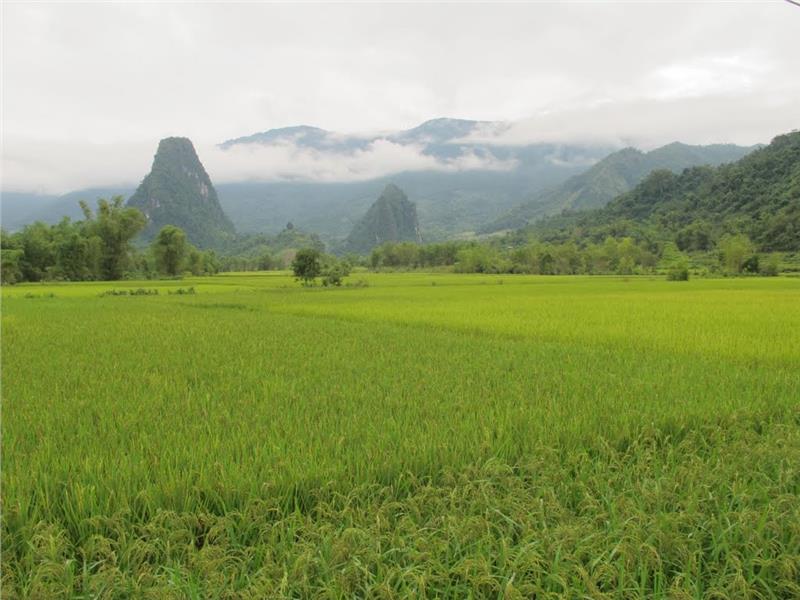
Bac Kan economy has potential development of mining and mineral processing industry, building materials. The province has 165 mines. The minerals with large reserves are 70 lead-zinc mines with reserves of about 4 million tons, 13 iron mines with reserves of about 22 million tons, 17 gold mines with reserves of about 39 tons, cement limestone 150 million cubic meters, white stone, quartz about 460 million cubic meters, cement about 10 million cubic meters. In addition, there are mines of antimony, titanium, kaolin, and silica... In the next time, Bac Kan continue to call for investment projects in small and medium scale to enhance the value of minerals and better serve local industries and towards export.
Bac Kan province is calling for investment in infrastructure development of Thanh Binh Industrial Zone as well as a number of other industrial clusters in the province such as Xuat Hoa industrial cluster, Nam Bang Lung industrial cluster, and the industrial cluster in northern Bac Kan, Cam Giang - Bach Thong industrial cluster.
The natural forest area of Bac Kan is largest among province in Northeast region (95.3%). Production of annual timber is harvested on 63,000 cubic meters. To exploit effectively the potential above, Bac Kan is calling for investment in the wood processing industry, planting and developing forest. Currently, Bac Kan has planned to built forest product processing factories and facilities manufacturing wooden furniture, building materials and handicrafts.
Locating inland, but due to its location on Highway 3 - the key highway of Northeast linking Hanoi to Cao Bang, so Bac Kan can easily exchange with Cao Bang province and northern province of China, Thai Nguyen, Hanoi as well as the provinces in the south of Red River Delta. This is a big advantage for Bac Kan to promote trade exchanges of goods to the border gate of Cao Bang, Lang Son, Quang Ninh, Hai Phong and Hanoi.
Society
Education and training of the province has achieved the significant results. The size and types of schools is constantly expanding, the facilities are enhanced, and the province has 52 schools meeting national standards. Organizational apparatus of the health sector is strengthened from the province to grassroots level. National Target Programs of health is implemented well. Reduction poverty reaches the good results. The life of the majority of people in the province has been gradually improving.
The social cultural activities are increasingly rich and diverse. Aspect of rural area, as well as districts and province is being changing every day towards the direction of civilization and modernity. Security, politics, social order and safety are strengthened and maintained.
Culture
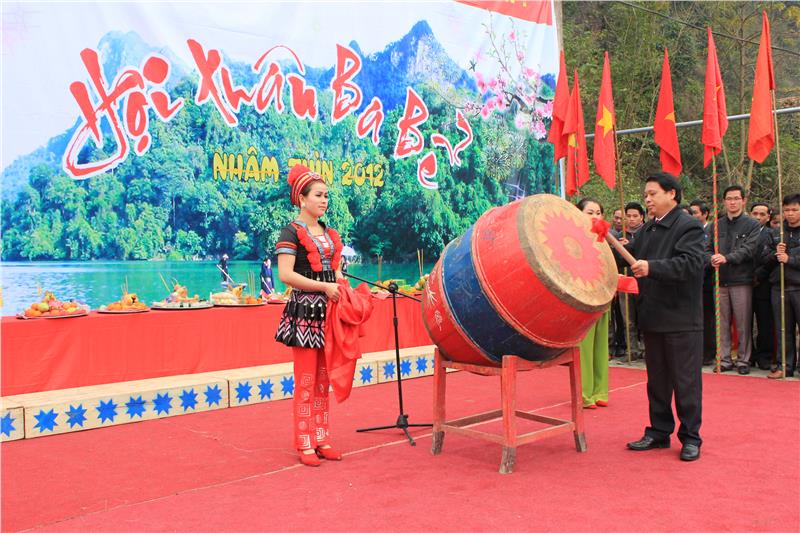
With 7 ethnic groups living together including Tay, Nung, Kinh, Dao, Mong, Hoa and San Chay, Bac Kan has a vibrant and diverse culture. Long-standing cultural identity of each ethnic group has made a unique beauty to the local culture. Along with the unique customs and habits, the culture of ethnic groups is also known through the folk singings including Sli Giang singing of Nung ethnic group, Then singing of Tay people, through traditional festivals as Long Tong festival, Spring Festival, so on.
Tourism
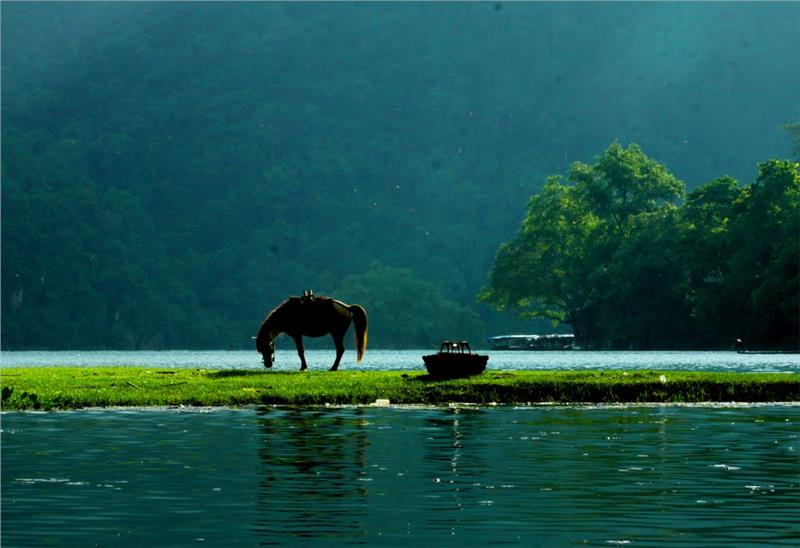
With many rivers, mountains and lakes, Bac Kan tourism has great potential for natural tourism development as Ba Be Lake - one of the 20 largest freshwater lakes in the world, Ba Be National Park with the area of 23.340ha, of which more than 417 species of plants and 299 vertebrate animals, Kim Hy natural conservation area... In addition, many historical cultural relics, especially revolutionary relics in the French resistance and American resisitance as ATK Cho Don, Na Tu relic, Cam Giang, Phu Thong, Deo Giang are very favorable to the development of cultural tourism.
Ba Be Lake is the freshwater lake loaceted between 2 districts of Ba Be and Cho Don, Bac Kan province. The lake was formed over 200 years ago with 8km long, 3km wide and 145m high above the sea level. It is surrounded by ancient limestone mountains dating back more than 450 million years. It was recognized as the national tourist area of Vietnam. Coming to Ba Be Lake, tourists can sail around the lake by a dug-out canoe or boat to watching the natural sights. With many unique features and beautiful natural sights, Ba Be Lake was recognized as one of 20 special freshwater lakes in the world which need to be protected and developed.
Ba Be National Park is located in the northwest of Ba Be district, about 68km far from Bac Kan town and 250km away from Hanoi capital. Ba Be National Park has the total area of 44.750ha. Ba Ba Be is one of the National Parks with a coverage and a high rate of primary forest in the special-use forest system if Vietnam and the karst areas in the world. Ba Be National Park is covered over 73.68% of the tropical moist evergreen forest.
Ba Be has a high diversity with 1,268 higher vascular plants, including globally threatened species as Nghien (Burretiodendron hsienmu), Kim giao (Nageia fleuryi), etc. The fauna is rich with 81 species of mammals, 322 species of birds, 44 species of reptiles, amphibians, 106 species of fish, including Francois langur, European otter, Asian golden cat, white-eared night heron, etc.
In 1896, Ba Be was recognized the national historical cultural relics. In 2003, Ba Be was recognized the ASEAN heritage. On February 2 rd, 2011, Ba Be National Park was recognized the Ramsar Site No. 1938 of the world and the 3rd Ramsar Site of Vietnam by the Ramsar Secretariat.
Na Khoang Waterfall is situated in foothill of Deo Gio, near National Route 3, about 6km from Na Phac town, Ngan Son district. The waterfall has the area of about 12ha, where 2 large streams meet. Above the waterfall, it is a pure small lake - an ideal place to avoid the noise and immerse in nature. Around the waterfall is forest regeneration with the average coverage from 75 to 85%. This is the home to H'Mong people and Dao people. They are keeping the unique traditional cultural identities as costume, belief and folk singings, folk dances contributing to the abundance of the cultural environment here.
Festival
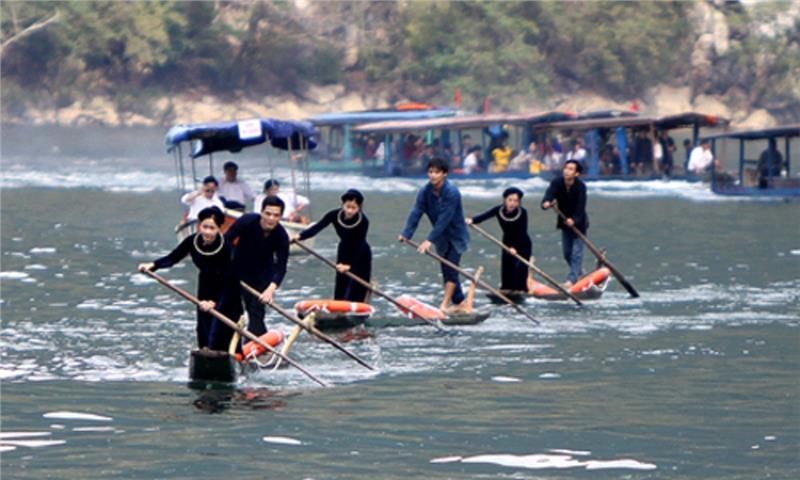
Long Tong festival in Bang Van holds on the fifteenth day of January, in Bang Van commune, Ngan Son district. The festival is held to pray for luck, good weather, and prosperity of ethnic groups here. Ba Be spring festival is the largest festival in Bac Kan in general and in Ba Be in particular bearing the identity of ethnic minority communities in Ba Be Lake. It is held to satisfy the aspiration returning the root, religious practice and spiritual balance of people here. The festival is the blessing, praying for the luck, good weather, the balance of yin and yang, the proliferation, prosperity and happiness with a year of good weather and bumper crop of local people.
Annually held in the 3rd and 4th day of January, Mu La festival is the traditional festival imbued with the cultural identity of H'Mong people in Co Linh commune, Pac Nam district. Since 2014, Mu La festival has been celebrated with the scale of district, attracting numerous tourists from near and far.
Tet Thanh Minh (Qingming Festival), also known as the Cold Food Festival is a festival showing the acculturation of the Vietnam nation with other countries in Southeast Asia. Although originating from China, Tet Thanh Minh has been "Vietnamized", and it becomes a characteristic holiday in Vietnam. For ethnic groups in Bac Kan, Thanh Minh festival is considered the scared occasion expressing the respect of descendants to ancestors. Tet Thanh Minh on March 3rd has been preserved and handed down through generations and become an unfadable cultural beauty until today.


